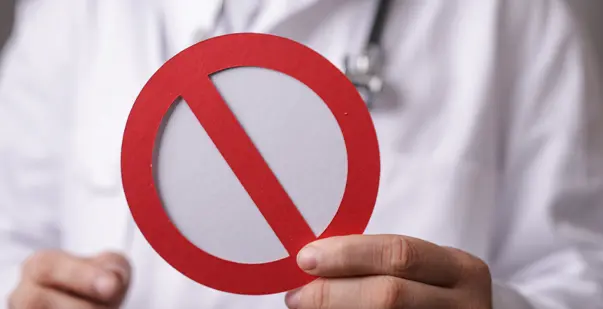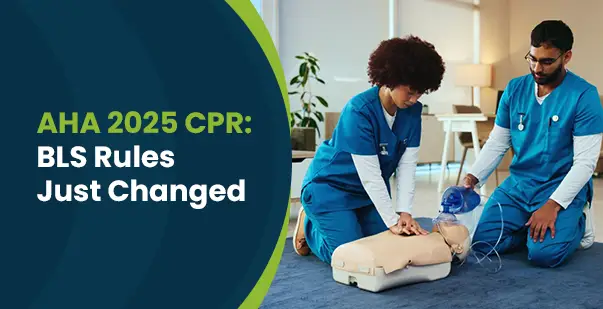Most people have seen cardiopulmonary resuscitation performed on television and in movies. This causes people to overestimate its efficiency. In reality, survival rates are 10–20% for individuals who have a cardiac arrest outside the hospital. This number is further lower for those with chronic health conditions. Many people in these circumstances choose to get a do-not-resuscitate order. This helps them avoid getting CPR if their hearts stop beating.
Are you or your loved one considering a DNR order? The blog will help walk you through understanding what DNR is.
What is a DNR?
Are you wondering, what does DNR mean? A do-not-resuscitate (DNR) order is a legal document that means a person has decided to have cardiopulmonary resuscitation (CPR) attempted on them. People who choose to have a DNR have a terminal illness or other medical condition. In most situations, a healthcare provider writes a DNR order after discussing the benefits and risks of CPR with the person or their loved ones.
Ideally, someone would fill out our do-not-resuscitate form prior to an emergency. A DNR order allows them to choose not to receive CPR in an emergency. The DNR order informs healthcare providers to perform CPR when a heart stops breathing.
When you have a DNR, it becomes a crucial part of your medical chart. Sometimes, a DNR order is called a do-not-attempt-resuscitation order or an allow-natural-death order. If you head to the hospital, it may help to post your DNR order next to the hospital bed. This will help you avoid any confusion during an emergency. Without a DNR order, medical staff at the hospital will try their best to restore your breathing and the normal rhythm of your heart.
What does resuscitate mean?
Resuscitate is a medical term that refers to any treatment or action taken to save someone’s life. It includes treatments for someone who:
- Is suffering a cardiac arrest
- Has stopped breathing or is facing severe trouble breathing
- Is unconscious
- Is conscious, however critically ill, and facing near-death experiences
It includes many treatments beyond CPR. It can include procedures such as intubation. This is a situation when someone is placed on a ventilator. It can also include several types of medications, from antibiotics to intravenous fluids.
You must note that a DNR does not prevent someone from receiving other treatments failing under the category resuscitation. For example, someone might not want CPR but want breathing support. Moreover, someone who has a DNR order can receive medications such as antibiotics.
How to create a DNR order?
If you want a DNR order, tell your requirements to your provider and healthcare team. Your provider must follow your wishes or the following:
- Your provider may transfer your care to a provider who carries out your wishes.
- If you are a patient in a nursing home or hospital, your provider must agree to settle any disputes. This is to ensure that all the wishes are followed.
- Your provider can fill out the form for the DNR order.
- Your provider writes the DNR order in your medical record when you are in the hospital.
- Your provider can tell you ways to get a wallet card, other DNR documents, and a bracelet to have at home or in non-hospital settings. This will enable emergency medical personnel to understand your DNR status.
Things to keep in mind:
- Include your wishes in an advance care directive.
- Inform your health care agent and family of your decision.
- If you happen to change your mind, talk to your healthcare team immediately. Tell your family and caregivers about your decision. Do not forget to destroy any documents you may have concerning the DNR order.
Why would anyone want a DNR order if CPR could save lives?
Cardiopulmonary resuscitation means more than chest compressions and mouth-to-mouth breathing. CPR might also include the use of powerful drugs or electric shock with the help of an automated external defibrillator. Healthcare providers insert a breathing tube in your airway. This helps you breathe efficiently.
Although CPR can save lives, it does not always work. Even if a person is resuscitated, they often suffer painful injuries during CPR, such as sternal fractures and broken ribs.
What should you do if you are unable to make a decision?
If, in any case, you are unable to state your wishes about CPR, you must do the following:
- If your provider has written a DNR order at your request, then your family does not need to override it.
- You may have named someone to speak for you, such as a health care agent. This person can agree to a DNR order for you.
- Under some circumstances, a family member can agree to a DNR order for you. However, this is true only when you are able to make medical decisions for yourself.
Read more: How to become CPR certified?
How can you make your wishes known about CPR?
To create a do-not-resuscitate order, you must understand its significance and implications. It is crucial to discuss this decision with your healthcare provider and loved ones to ensure everyone respects your wishes.
Wondering how to create a DNR order? Keep reading.
Consult with your healthcare provider:
Make an appointment with your primary care physician or a specialist. Discuss your wishes to create a DNR order. During this consultation, your doctor will explain the medical implications of a DNR. Make sure you completely understand what it offers. This is also the right opportunity to ask any questions you might have about the consequences and cope with the DNR order. Your doctor will help you ascertain if a DNR is ideal for your medical condition and healthcare goals.
Complete the required forms:
Your healthcare provider will offer you the specific forms required to create a DND order. These vary by state and country. Hence, make sure that you have the right version. Fill out the forms with complete information, including your personal details. Some forms may need your signature and that of the physician’s.
Inform your caregivers and family:
Once the DNR order is completed, you must inform your family members and any caregivers about your decision. Maintain clarity in communication to prevent confusion or disagreements during an emergency. Offer copies of the DNR order to individuals who must be made aware. This includes your family members, nursing home staff, and home health support. Share with them your reasons for the DNR to ensure everyone understands and respects your wishes.
Register the DNR order:
Some regions need DNR orders to be registered with emergency medical services or local health authorities. You can check with your healthcare provider for specific registration requirements. Registering your DNR enables emergency responders to be aware of your wishes if they are called to your home. Make sure that you keep a copy of the registration confirmation along with your important documents.
Keep the DNR order accessible:
Place the original DNR order in an easily accessible location in your home. You can keep it near your refrigerator or your bed. Carry a copy of the DNR order along with you if you travel frequently or spend time away from home. Inform your healthcare provider and hospital of the DNR order. Make sure that it is included in your medical records. Do not forget to review and update the order regularly if your medical condition or preferences change over time.
There are many other options to file a DNR order, allowing you to specify other directives for your end-of-life care.
Physician Order for Life-Sustaining Treatment (POLST)
A DNR order allows you to choose whether you want CPR in an emergency. It does not provide instructions for other treatments such as antibiotics, artificial nutrition, or IV fluids. The POLST is more detailed and includes several options for CPR. It also details the kind of treatments you want for your medical care.
Advanced directive
An advanced healthcare directive is a legal document that outlines a person’s wishes for their future medical care. If you do not have medical issues now, an advanced directive can help you when you have a serious health condition and cannot make decisions by yourself. If you are not able to express these wishes on your own, An advance directly refers to a legal document that details a person’s wishes for future medical care. If you do not have medical issues now, an advance directive can help you when your health condition is serious and you can no longer make decisions for yourself. An advance directive refers to a combination of two primary documents: a living will and a durable power of attorney for healthcare.
A living will
A living will explains the kind of treatment you want if you are at the end of your life and are confused about your decision. A living will offers more detailed information about medical care, including the following:
- CPR and defibrillation
- A breathing machine
- Artificial nutrition, comprising a kind of nutrition delivered through a feeding tube or IV.
- Dialysis
- Organ and tissue donation
- Emergency surgery
- Medicines and blood transfusions
Here are a few essential things to note about a living will:
A DNR request in your living will is not the same as a DNR order. You will need to communicate your request to your care provider, who can enter a DNR order in your medical record.
Two physicians must confirm that you are not able to make decisions any longer before a living will can be used to guide your healthcare. This is applicable if your medical condition cannot be cured or you are unconscious permanently.
Differences between an advance healthcare directive, DNR, and POLST
These are end-of-life planning documents that guide some aspects of your medical care. The table below can help you understand the primary differences:
| Advance healthcare directive | POLST | DNR order | |
| Is it a legal document? | Yes | Yes | Yes |
| Who fills one out? | Any adult | Older adults, ill people, and those with advanced chronic diseases | Older adults, ill people, and those with advanced chronic diseases |
| Who completes it and signs it? | An attorney | A physician | A physician |
| How lengthy is the document? | Several pages | 1-2 pages | 1-2 pages |
| Can you name a healthcare POA? | Yes | No | No |
| Do first-responders use it? | No | Yes | Yes |
| Is it in your medical record? | No | Yes | Yes |
Can a family refuse a DNR order?
If a person has completed a DNR order, the family cannot refuse it. If you have a DNR order and your family does not agree, medical personnel will still honor it. They will work with your family to help them understand your decision.
Read more: CPR Success Rate: How Effective Is CPR in 2024?
Secure Your End-of-Life Wishes
So what is DNR? A DNR order specifies that someone does not want CPR during an emergency. It is a tough decision that is important to think about for end-of-life care. Other advance care planning documents offer more detail about someone’s wishes for their medical care if they are sick, have a chronic illness, or are nearing their end. But don’t worry; you do not have to do this alone. Your family, friends, and close ones can help you with this hard but important decision.









